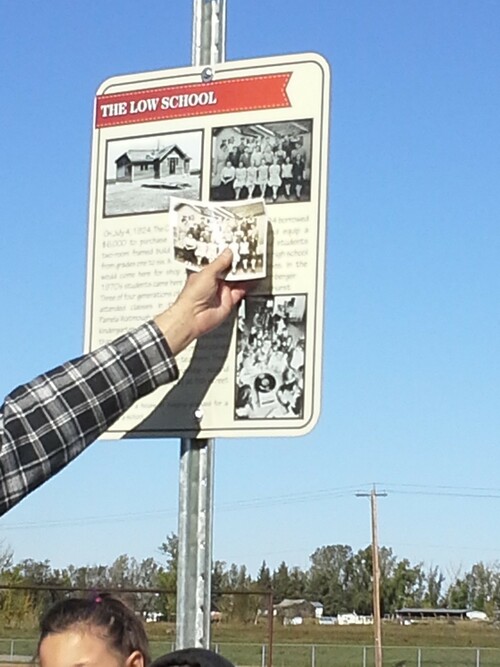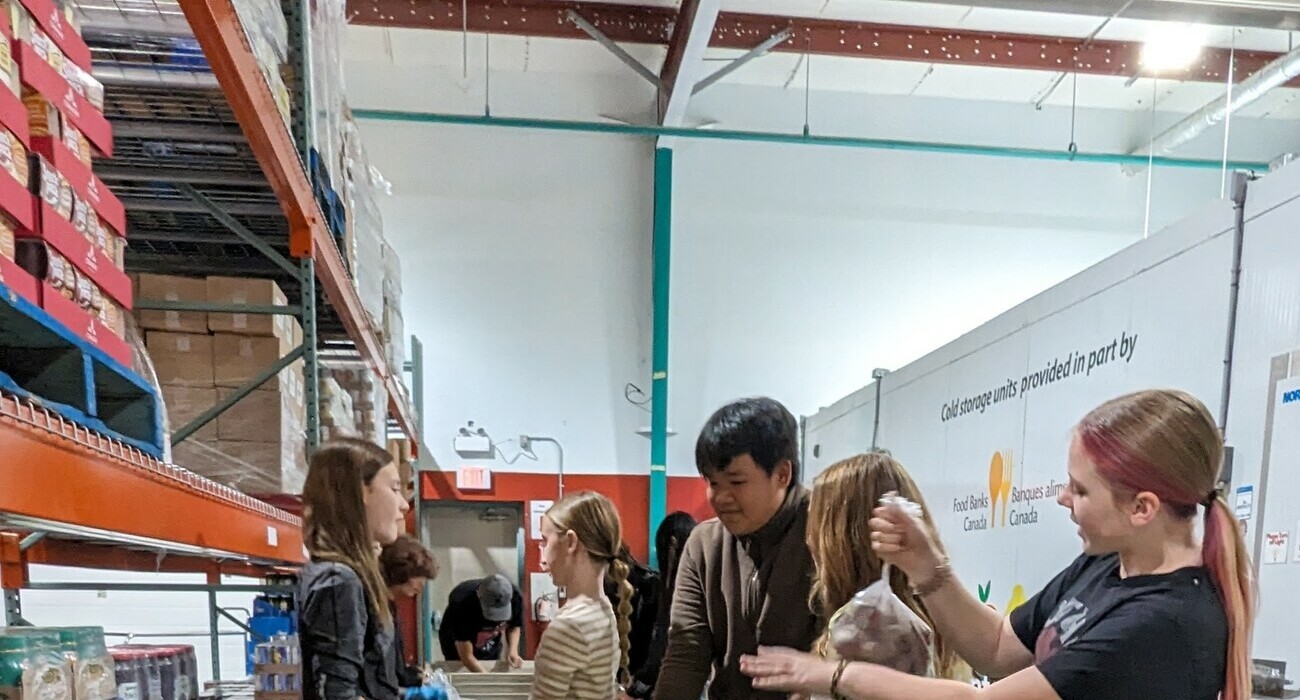
Thank you to Coalhurst Elementary School teacher Emma Lenz and several of her Grade 2-3 students who have joined Palliser's News Bureau to share news about their school. In this instalment, student reporters and a photographer share the highlights of a 90-minute walking tour of the community's new history signs, that point out historically significant locations in the community.
The History Signs of Coalhurst
By MADDISON PHILIP
Palliser News Bureau
On Oct. 2, Grade 2 and 3 students from Coalhurst Elementary School went on a history walk. There are 11 special history signs that were made for the Coalhust Centennial.
All of the students were excited about learning about some of the sites in the town.
The first stop was the site of the town's hospital. Mr. Charles Wesselman told us a story about the hospital (for details, see reporter Preston Doubinin’s story). We moved on to where the Imperial Mine was. We talked about the explosion and when it happened (please see reporter Joey Pierson’s story). Mr. Dennis Cassie, the mayor of Coalhurst, came on the walk with us. He held the horse helmet for our presenter, Mr. Lawrence Watmough. Our next stop was the high school where we learned from Mr. Al Duncan about the “Low School," the name they gave to the elementary school. The last sign was at the church. Mrs. Fiona Denhoed told us about how she went there and about the bell that used to be in the tower. It was called “Maria Josephina." It was getting close to lunch and we were all getting tired and hungry. We returned when the lunch bell rang.
We had a good time on the history walk. Hopefully the kids will get to see the other history signs in the town on their own.
The Imperial Mine of Coalhurst
By JOEY PIERSON
Palliser News Bureau
Mr. Lawrence Watmough of Coalhurst shared interesting facts about the history of mining in Coalhurst.
Fact 1: It took a long time to get down in the mine because the shaft was slow and the mine was 600 feet down.
Fact 2: The mine went in all directions – north, east, south and west.
Fact 3: The horses names were Sandy, Princess and Sparky.
Fact 4: Three miners survived the boom. Sixteen miners died on December 9, 1935 when the mine exploded.
Fact 5: The miners had tags to show that they were in the mine.
It was exciting to learn about the mine and about Coalhurst history.
1937 Treatment for Pneumonia at Coalhurst Hospital
By PRESTON DOUBININ
Palliser News Bureau
Mr. Charles Wesselman moved to Coalhurst in 1925 at age one. When he was 12 years old, he went to the Coalhurst Hospital because he got pneumonia. He had to stay in bed for one month, then he had surgery where he got a tube put in his back to drain fluids from his lungs. He then stayed on bed rest for two months before his doctor, named Dr. Murray, said he could go home.
Low School students had no indoor plumbing
By JORDAN PECK
Palliser News Bureau
On October 2, 2013, about 44 students showed up for our social studies history walk. Mr. Al Duncan went to meet the kids at the site of the old “Low School.” The school didn't have indoor plumbing and Mr. Duncan said the outhouses were eight metres apart and about 13 metres from the school. At recess, that is where students went.
The Low School, built in 1924, housed classes of Grade 1 to 6 students. It burned down in 1974, the first year that Coalhurst had kindergarten classes in that building.
Remembering St. Joseph’s Church
By EMMA LENZ, teacher
Coalhurst Elementary School
The last stop on the morning’s history walk was at the site of what once was the community's Catholic church. Long-time Coalhurst resident Mrs. Fiona Denhoed shared her experience as a member of the St. Joseph’s parish. The church, which was built in the 1920s, closed in 1999. She talked about how the celebration of the mass brought together Catholics of many European nations that were beginning to build new lives in Coalhurst. She explained that the big bell that once was housed in the bell tower is now waiting for a new home. The church has now been converted to a private residence.

